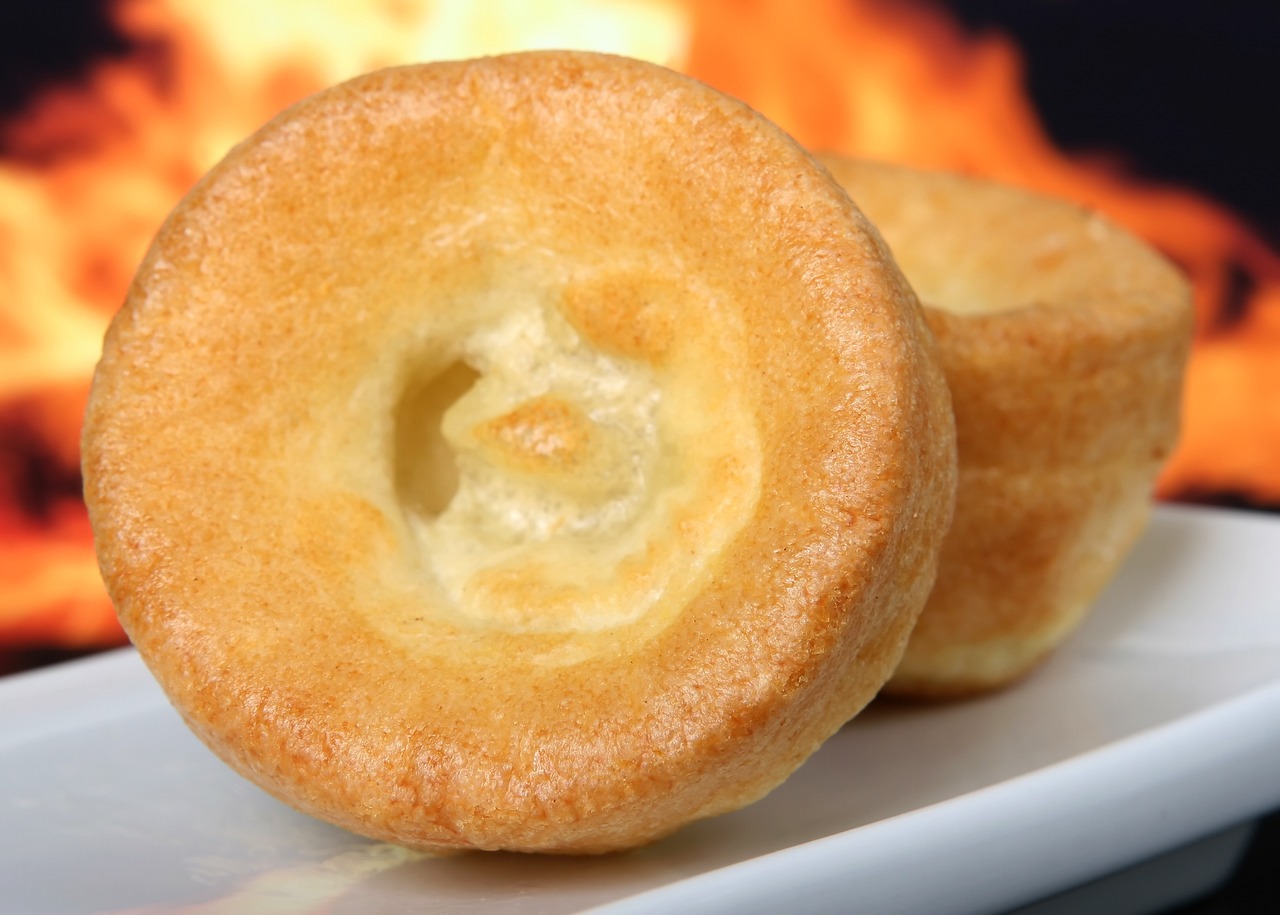Your cart is currently empty!

Yorkshire Pudding
One of the most classic dishes in British cooking is what is known today as “Yorkshire pudding”. This dish is typically consumed on Sundays with a roast. The importance of the dish is recognized every year in the U.K. on the first Sunday in February, which is known as “National Yorkshire Pudding Day”.
The recipe was originally created in the north of England as an accompaniment to a roast of beef that was cooked over a spit fire. As the meat cooked, a pan would be placed underneath it to catch the drippings from the meat. Once the meat was cooked and the drippings were collected in the pan, cooks would add batter to the hot pan to create what was originally known as “dripping pudding”. Later in the 18th century the dish was dubbed “Yorkshire pudding” by cookbook writer, Hannah Glasse in her book, “The Art of Cookery Made Plain and Simple”.
This pudding was consumed as an accompaniment to meat. However, as the Industrial Revolution ramped up over the 18th and 19th centuries, many who had left agriculture and flocked to the cities in the north of England to work in cotton mills could not afford roast beef or any other large amount of beef. In these instances, Yorkshire pudding did not serve as an accompaniment to a meal dish, rather the pudding became the main dish. The recipe calls for a few simple and relatively inexpensive ingredients, such as flour and milk, making it a useful way to fill stomachs and stretch resources.
In Britain today, Yorkshire pudding is still a popular dish to serve on Sundays with beef or other types of meat. Its consumption is not confined only to the north of the country, but it is eaten throughout the UK. Traditionally, the dish was cooked in one large pan, which worked well to catch drippings and then produce the pudding. However, today’s Yorkshire pudding is typically cooked in a muffin tin, or specially made, deep-set Yorkshire pudding tins to produce individual portions. This dish is typically savory in nature, and is often eaten with a beef gravy, which is made from the drippings, or an onion gravy.
There are several variations of importance to note here. With the addition of sausage to a large pan of Yorkshire pudding batter, the dish becomes what is known as “toad in the hole”. As with Yorkshire pudding, toad in the hole is also a classic British recipe, which developed around the same time as the pudding. The addition of sausage shifts the dish from one primarily considered a side dish to a main dish. Using sausage rather than meat was a much less expensive means to feed a family and eke out resources. The fat from the sausage takes the place of meat drippings in which to cook the batter. The method of cooking was also more simplified with this dish. Cooks didn’t have to spend hours roasting meat over an open fire or in the oven. Rather, they simply made the batter, added sausage and cooked it, reducing the time needed to complete the dish.
The American cousin to Yorkshire pudding is also a classic recipe known as “popovers”, which began appearing stateside in the 1800’s. The dish consists of a simple batter made with flour, milk, and eggs. However, unlike the British version, the dough uses butter in the cooking process, rather than meat drippings. Popovers are baked in a muffin tin for individual portions. The dish is versatile in its usage at the American table, appearing in both sweet and savory contexts. It can easily be found served with jam or honey at breakfast, accompanying soup at lunch, and being eaten as an appetizer with supper.
Another, although less common recipe today, which is akin to Yorkshire pudding as well as the popover, is a dish known as “Lapland cake”. Appearing in American cookbooks in the 19th and early 20th century, it contains similar ingredients to the other two dishes. The difference in variation emanates in the use of cream, rather than milk in recipes for the cakes. Today, the Lapland cake is much less known than the more famous and well-loved Yorkshire pudding and American popover.
Get the historical recipes…
Are you interested in making a historical SPAM dish, but don’t have a good recipe? We offer curated historical recipes of Yorkshire Pudding, Toad in the Hole, Popovers, and Lapland Cake for you to enjoy with family and friends at the cost of $1 each. Click the link to purchase the recipes.
Read on…
If you would like to read further about these classic dishes, click on the books below to purchase them.



